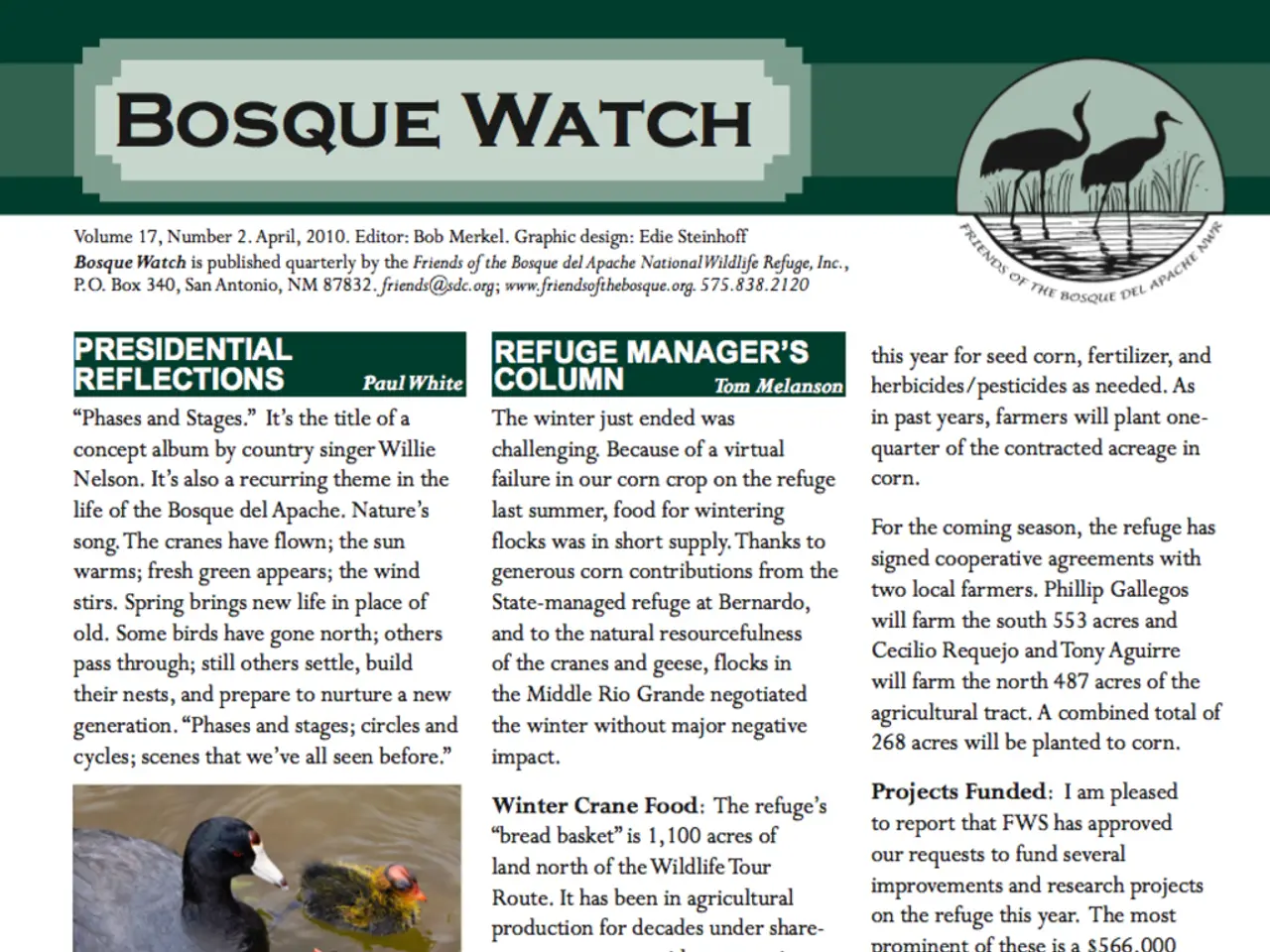Budget Restrictions and Wild Duck Counts: Dealing with the Obstacles
The U.S. Fish and Wildlife Service (USFWS) is grappling with the consequences of budget cuts, which have led to widespread layoffs, facility closures, and reduced resources. One of the programs affected by these cuts is the century-old waterfowl survey, a critical tool for managing hunting quotas and informing conservation strategies.
The waterfowl survey assesses bird populations and breeding habitats, such as the Prairie Potholes. Its data is essential for climate change adaptation strategies and broader conservation efforts, including habitat restoration. The survey's rigorous methodology has earned it global recognition as a gold-standard program.
Experienced pilot biologists, crucial for aerial surveys, have been among those affected by the cuts. The survey faces challenges in maintaining aircraft, renewing electronic subscriptions, and conducting cross-border operations requiring Canadian visas due to the budget cuts.
Advocates are calling for increased funding and support to ensure the program's continuity. The proposed budget cuts suggest reducing the EMA budget from $293 million to just $29 million, which threatens to close or drastically curtail the Bird Banding Lab. This lab provides essential data on migration, habitat use, and population dynamics of waterfowl.
Congress has until September 30 to modify the President’s proposed budget. There is hope lawmakers may reject or soften these cuts, as the reductions have sparked concern from conservationists and hunting communities who recognize that losing this specialized scientific capacity could damage waterfowl conservation and hunting quality long-term.
Hunters in states like Arkansas have expressed concerns about the potential loss of the waterfowl survey as a vital resource. Despite these concerns, the Fish and Wildlife Service is still setting frameworks for the upcoming migratory bird hunting seasons for 2025-26, indicating that hunting seasons will be maintained, though waterfowl numbers like mallards may be lower due to environmental factors such as drought in key breeding areas.
The survival of the waterfowl survey is crucial for its important role in wildlife management. The issue has sparked debates about balancing fiscal efficiency with environmental stewardship. Conservationists are concerned that the cuts could undermine the survey's ability to provide accurate data, jeopardizing the sustainability of waterfowl hunting seasons.
No definitive alternative plans or funding solutions have emerged yet, so the situation remains precarious for waterfowl monitoring and management programs. The outcome of the ongoing congressional budget negotiations will substantially impact waterfowl science, conservation planning, and hunting regulations if the budget cuts proceed unmodified.
The budget cuts have threatened the continuity of the waterfowl survey, a critical tool for wildlife management and climate change adaptation strategies, by impacting its funding and resources. The survey's rigorous scientific methodology, recognized globally, is essential for habitat restoration and data on migration, habitat use, and population dynamics of waterfowl.
Advocates are appealing to Congress to increase funding for the survey to ensure its sustainability, as the proposed cuts could jeopardize waterfowl conservation and hunting quality in the long term. Hunting communities, such as those in Arkansas, have expressed their concerns about the potential loss of this vital resource.
The stakes are high, as the survival of the waterfowl survey is crucial for wildlife management, conservation planning, and hunting regulations. The ongoing debates about fiscal efficiency and environmental stewardship are centered on ensuring the survey's ability to provide accurate data for the sustainability of waterfowl hunting seasons.
In the absence of alternative plans or funding solutions, the future of waterfowl monitoring and management programs remains uncertain, with the outcome of the ongoing congressional budget negotiations being a determining factor for waterfowl science, conservation, and sports.




